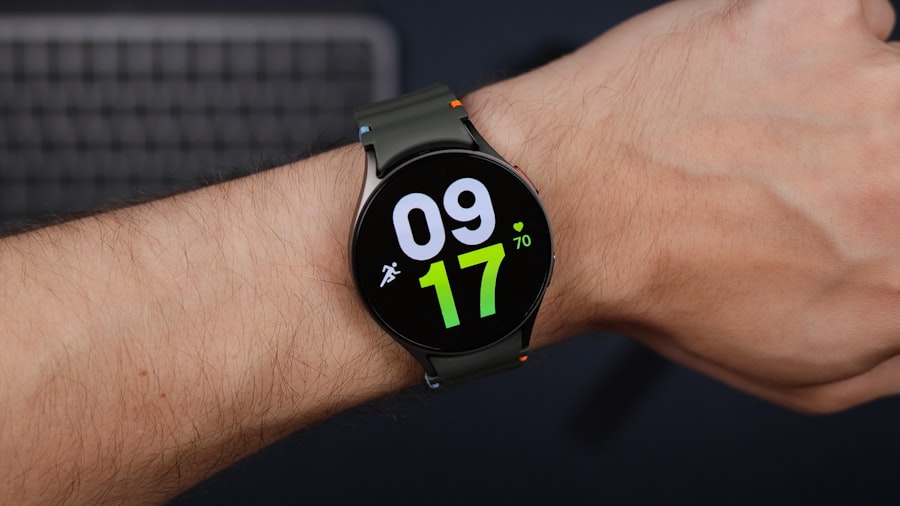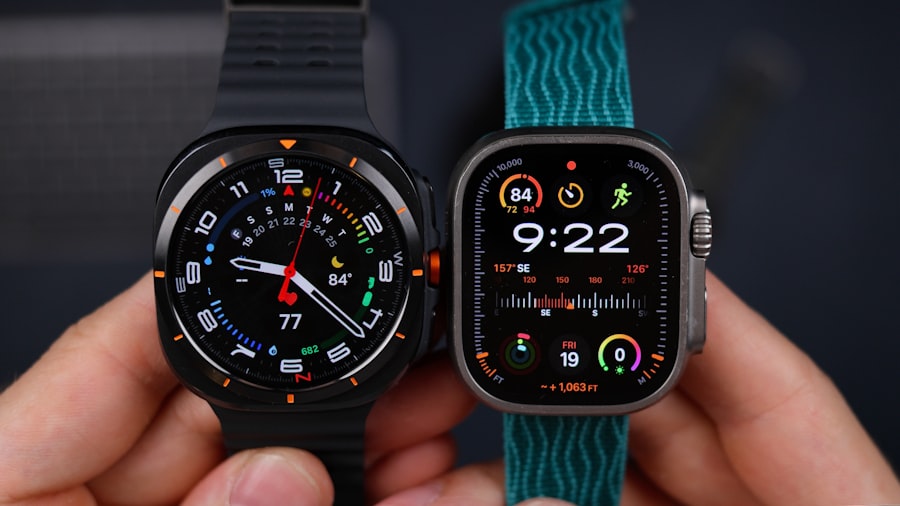Wearable devices have emerged as a transformative technology in the realm of personal health and fitness. These compact gadgets, often worn on the wrist, body, or even integrated into clothing, are designed to monitor various physiological parameters and provide real-time feedback to users. The proliferation of smartphones and advancements in sensor technology have catalyzed the growth of this market, making wearable devices more accessible and sophisticated.
From fitness trackers that count steps and monitor heart rates to smartwatches that offer a plethora of health metrics, these devices have become integral to many individuals’ daily routines. The appeal of wearable devices lies not only in their convenience but also in their ability to empower users with data-driven insights about their health. As people become increasingly health-conscious, the demand for tools that facilitate self-monitoring and promote proactive health management has surged.
Wearable technology is not just a trend; it represents a significant shift towards personalized healthcare, where individuals can take charge of their well-being through continuous monitoring and informed decision-making.
Key Takeaways
- Wearable devices have become increasingly popular for monitoring various health metrics and are now being used to track body temperature.
- Monitoring body temperature is important for detecting early signs of illness and for managing certain health conditions.
- Wearable devices measure body temperature using sensors that can detect changes in skin temperature and ambient temperature.
- There are different types of wearable devices for monitoring body temperature, including smartwatches, patches, and smart clothing.
- The accuracy and reliability of wearable devices for measuring body temperature can vary, and it is important to consider these factors when choosing a device.
The Importance of Monitoring Body Temperature
Understanding the Importance of Body Temperature Regulation
Monitoring body temperature is a vital aspect of health management, serving as a key indicator of an individual’s physiological status. The regulation of body temperature is crucial for maintaining homeostasis, and any deviations from the normal range can signal underlying health issues. For example, a fever often indicates the presence of an infection or illness, while hypothermia can result from prolonged exposure to cold environments.
Early Detection and Intervention through Temperature Monitoring
By tracking body temperature, individuals can detect potential health problems early, allowing for timely intervention and treatment. This proactive approach enables individuals to take control of their health and seek medical attention before a condition worsens. In the context of public health, monitoring body temperature has become increasingly important, particularly in light of global health crises such as the COVID-19 pandemic.
Temperature Screening in Public Health Settings
Elevated body temperature has been recognized as a primary symptom of infection, prompting widespread temperature screening in various settings, including airports, workplaces, and healthcare facilities. This approach not only aids in identifying symptomatic individuals but also plays a crucial role in controlling the spread of infectious diseases. As such, the ability to monitor body temperature continuously and accurately through wearable devices can significantly enhance individual and public health outcomes.
How Wearable Devices Measure Body Temperature

Wearable devices utilize various technologies to measure body temperature accurately. The most common methods include infrared sensors, thermistors, and thermocouples. Infrared sensors detect heat emitted from the skin’s surface, providing a non-invasive way to gauge temperature without direct contact.
This method is particularly useful for continuous monitoring, as it allows for real-time data collection without discomfort to the user. Thermistors are another popular choice for wearable devices. These temperature-sensitive resistors change their resistance based on temperature fluctuations.
When integrated into wearables, thermistors can provide precise readings by measuring the skin’s temperature or even core body temperature when placed in specific locations. Thermocouples, which consist of two different metals joined at one end, generate a voltage that correlates with temperature differences. While less common in consumer wearables due to their complexity, they are still utilized in specialized medical devices for accurate temperature measurement.
Types of Wearable Devices for Monitoring Body Temperature
The market for wearable devices designed to monitor body temperature is diverse, encompassing a range of products tailored to different user needs and preferences. Smartwatches are among the most popular options, often equipped with multiple sensors that track various health metrics, including heart rate and sleep patterns alongside body temperature. Brands like Apple and Fitbit have integrated temperature monitoring features into their latest models, allowing users to keep tabs on their health seamlessly.
Another category includes dedicated health monitors that focus primarily on temperature tracking. These devices may come in the form of patches or bands that adhere to the skin and provide continuous monitoring throughout the day and night. For example, the TempTraq is a wearable patch that continuously monitors body temperature and sends alerts to a smartphone app if it detects abnormal readings.
This type of device is particularly beneficial for parents monitoring their children’s health or for individuals managing chronic conditions that require regular temperature checks.
Accuracy and Reliability of Wearable Devices
The accuracy and reliability of wearable devices in measuring body temperature are paramount for their effectiveness in health monitoring. Various factors can influence the precision of these measurements, including sensor calibration, placement on the body, and environmental conditions. For instance, skin temperature can vary significantly based on external factors such as ambient temperature or physical activity levels.
Therefore, it is crucial for manufacturers to ensure that their devices are designed to account for these variables. Clinical studies have shown that many wearable devices can provide reasonably accurate temperature readings when compared to traditional medical thermometers. However, discrepancies can still arise due to differences in measurement techniques.
For example, while traditional thermometers measure core body temperature through oral or rectal methods, wearables often measure skin temperature, which may not always reflect internal body temperature accurately. As technology advances, manufacturers are continually working to improve sensor accuracy and reliability through enhanced algorithms and better calibration techniques.
Benefits of Using Wearable Devices for Monitoring Body Temperature

Tracking Trends and Identifying Potential Health Issues
One of the most significant benefits of wearable devices is the ability to track trends over time. Continuous monitoring allows users to observe fluctuations in their body temperature patterns, which can be invaluable for identifying potential health issues early on. This feature enables users to take proactive measures to address any concerns before they escalate into more serious problems.
Enhancing Athletic Performance and Preventing Health Complications
Wearable devices can also be beneficial for athletes, allowing them to monitor their body temperature during training sessions to prevent overheating or dehydration. This feature is particularly useful for athletes who engage in high-intensity activities or train in extreme environments.
Improving Patient Care through Remote Health Monitoring
Wearable devices facilitate remote health monitoring, enabling healthcare providers to access real-time data from patients without requiring them to visit a clinic physically. This capability is particularly beneficial for individuals with chronic conditions or those recovering from surgery who may need regular check-ups but face mobility challenges. By leveraging wearable technology, healthcare professionals can make informed decisions based on accurate data, ultimately leading to better patient care and outcomes.
Limitations and Challenges of Wearable Devices
Despite their numerous advantages, wearable devices for monitoring body temperature also face several limitations and challenges that must be addressed. One primary concern is the potential for inaccurate readings due to external factors such as sweat, movement, or improper placement of the device on the skin. These variables can lead to fluctuations in measurements that may not accurately reflect an individual’s true body temperature.
Moreover, data privacy and security are significant challenges associated with wearable technology. As these devices collect sensitive health information, there is an inherent risk of data breaches or unauthorized access to personal data. Users must be aware of how their information is stored and shared by manufacturers and ensure they are using secure platforms for data management.
Additionally, there is a need for standardization across different devices and platforms to ensure compatibility and reliability in data sharing among healthcare providers.
Future Developments in Wearable Technology for Body Temperature Measurement
The future of wearable technology for body temperature measurement holds exciting possibilities as advancements in sensor technology and data analytics continue to evolve. One promising area is the integration of artificial intelligence (AI) into wearable devices. AI algorithms can analyze vast amounts of data collected from users over time, identifying patterns and anomalies that may indicate potential health issues before they become critical.
Furthermore, researchers are exploring innovative materials and designs that could enhance the comfort and accuracy of wearable devices. For instance, flexible electronics could be developed to create more comfortable patches or bands that conform better to the skin’s surface while providing accurate readings. Additionally, advancements in microfluidics may enable wearables to measure not only body temperature but also other vital signs through sweat analysis.
As society increasingly embraces telehealth solutions and remote patient monitoring, the demand for reliable wearable devices will continue to grow. The integration of body temperature monitoring into broader health management systems will likely become standard practice in both personal wellness and clinical settings. With ongoing research and development efforts focused on improving accuracy, comfort, and user experience, wearable technology is poised to play an even more significant role in shaping the future of healthcare.
If you’re interested in how technology can enhance personal health monitoring, you might find it intriguing to explore how modern devices are utilized in other tech applications. For instance, in the realm of content creation, choosing the right tools can significantly impact productivity and output quality. I recommend reading about the best laptops for video and photo editing, which can provide insights into the high-performance technology required for professional-grade creative work. You can learn more about this by visiting the best laptops for video and photo editing. This article could offer a broader understanding of how advanced technology meets user needs in various scenarios, similar to wearable devices for health monitoring.
FAQs
What are wearable devices for measuring body temperature?
Wearable devices for measuring body temperature are electronic devices that can be worn on the body to continuously monitor and track changes in body temperature. These devices are designed to provide real-time data and can be used for various purposes such as health monitoring, fitness tracking, and medical research.
How do wearable devices measure body temperature?
Wearable devices for measuring body temperature use sensors, such as thermistors or infrared sensors, to detect and capture the body’s temperature. The sensors are in direct contact with the skin or are positioned close to the body to accurately measure temperature changes. The data collected by the sensors is then processed and displayed on the device or transmitted to a connected app or system for further analysis.
What are the benefits of using wearable devices to measure body temperature?
The benefits of using wearable devices to measure body temperature include continuous monitoring, real-time data tracking, convenience, and the ability to detect subtle changes in temperature. These devices can be particularly useful for individuals who need to monitor their body temperature regularly, such as athletes, patients with certain medical conditions, and individuals in extreme environments.
Are wearable devices for measuring body temperature accurate?
The accuracy of wearable devices for measuring body temperature can vary depending on the quality of the sensors and the device’s design. Some devices have been clinically validated and proven to provide accurate temperature measurements, while others may have limitations in certain conditions or environments. It is important to consider the reliability and accuracy of a specific device before relying on its temperature measurements for medical or health-related decisions.
What are the potential applications of wearable devices for measuring body temperature?
Wearable devices for measuring body temperature have a wide range of potential applications, including monitoring fever in children, tracking ovulation cycles, detecting early signs of illness or infection, and optimizing athletic performance. These devices can also be used in medical research to gather large-scale temperature data for studying patterns and trends related to various health conditions.

